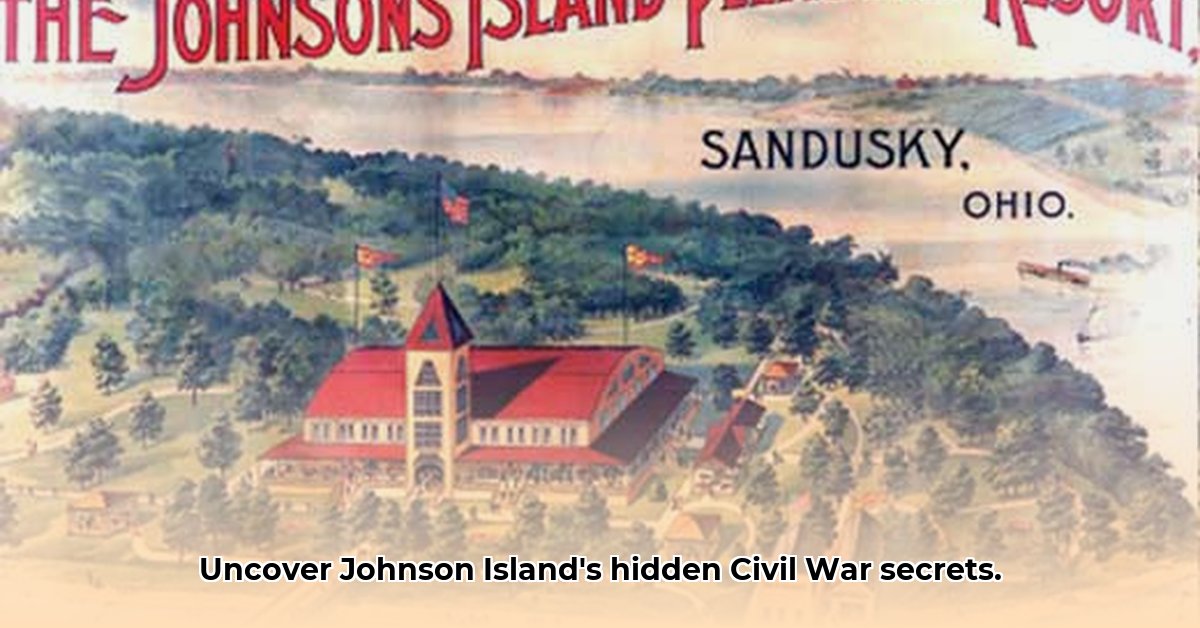Johnson Island, nestled in the tranquil waters of Lake Erie, holds a history far removed from its serene present. This island served as a Civil War prison camp for over 10,000 Confederate soldiers, a chapter etched in resilience, hardship, and unexpected humanity. This article explores the multifaceted story of Johnson’s Island, from its wartime transformation to its evolving legacy and the ongoing efforts to preserve its complex past. For more on Civil War history, see this resource.
Life Within the Stockade: A Community Forged in Captivity
Life on Johnson Island, although considered less brutal than some notorious Civil War prisons, presented significant challenges. Overcrowding, disease, and the harsh Ohio winters were constant threats. Confederate officers, separated from their families and cause, faced a daily struggle for survival. Yet, amidst these hardships, a remarkable community emerged. Prisoners established social structures, routines, and even found moments of humor and hope. They carved intricate keepsakes from bone and wood, organized theatrical performances, and debated the unfolding war through smuggled newspapers. Preserved letters and diaries offer intimate glimpses into their lives, revealing the human capacity to adapt and endure even under the most trying circumstances. These primary sources paint a vivid picture of a captive community striving for normalcy in the face of extraordinary adversity.
From Prison to Paradise Lost: Johnson Island’s Transformation
Following the Civil War, Johnson Island underwent a series of dramatic transformations. The prison structures were dismantled, and the island briefly became a resort destination, a stark contrast to its wartime past. This era saw the construction of hotels and recreational facilities, aiming to capitalize on the island’s natural beauty. However, this enterprise proved short-lived, and the island eventually transitioned into a quiet residential community. The limestone quarry, established in the late 19th century, further altered the island’s landscape, leaving its mark on both the environment and the local economy. This complex interplay of historical uses presents unique challenges for preservation efforts today.
Preserving the Past: The Ongoing Struggle for Remembrance
The preservation of Johnson Island’s history is an ongoing endeavor, fueled by the dedication of organizations like the Friends and Descendants of Johnson’s Island (FDJI) and the Johnson’s Island Preservation Society. These groups work tirelessly to enhance museum exhibits, develop educational programs, conduct archaeological research, and expand digital outreach initiatives. They strive to balance historical accuracy with engaging storytelling, making the island’s complex past accessible to a modern audience. Their efforts include guided tours of the Confederate Cemetery, maintained by the U.S. Department of Veterans Affairs, and the remaining earthworks of Forts Johnson and Hill, built in response to the failed Lake Erie Conspiracy. The challenge lies in securing sustainable funding and adapting preservation strategies to the evolving needs of the present while honoring the sacrifices and stories of the past.
The Mortality Rate Conundrum: Unraveling a Statistical Anomaly
Johnson’s Island stands apart from other Civil War prisons due to its comparatively low mortality rate. Understanding this anomaly requires careful examination of several factors. The island’s isolated location and purpose-built design contributed to better sanitation and security, minimizing the spread of disease and escape attempts. The leadership of Lt. Col. William Hoffman, while strict, may have fostered a less brutal environment compared to other prison camps. The prisoner population, primarily Confederate officers, may also have benefitted from preferential treatment due to their rank. However, conditions deteriorated over time as resources dwindled and the war intensified. Conflicting historical records and the lack of comprehensive documentation make determining the exact mortality rate challenging. Further research, incorporating both statistical analysis and personal accounts, is crucial to fully understand the complexities of this historical data.
A Legacy in Layers: Preserving Johnson Island’s Multifaceted History
Johnson Island’s history transcends its Civil War narrative. Its post-war transformations, from farmland to quarry to residential community, add layers of complexity to preservation efforts. Archaeological investigations, pioneered by individuals like Dr. David R. Bush, reveal valuable insights into the daily lives of prisoners, complementing written records and enriching our understanding of this period. Integrating these diverse sources is crucial for creating a comprehensive historical narrative. The preservation of Johnson Island isn’t simply about protecting physical remnants; it’s about ensuring that the stories of those who lived, suffered, and died there are not forgotten. Future preservation efforts must embrace innovative approaches, including digital storytelling, interactive exhibits, and community engagement, to ensure this unique island’s multifaceted legacy endures for generations to come.










